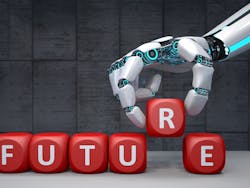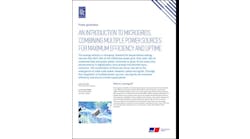A quick-thinking, self-driving energy grid of the future — an autonomous energy grid — is being developed by researchers at the National Renewable Energy Laboratory (NREL).
The goal is to integrate and make the best use of the many distributed energy resources (DERs) expected to come online in coming years, providing for fast-acting responses to grid problems, said Ben Kroposki, center director for NREL’s power systems engineering.
Mostly self-driving, the autonomous energy grid will operate without human intervention, he said. It will be able to respond quickly to grid problems because it will be made up of distributed energy controlled at local levels. Distributed controllers allow for a faster response to abnormal events, he said.
The autonomous energy grid can make decisions on its own and get electricity from place to place without an operator, he said. Today’s grid does some of this, but there are still people in the loop to make critical decisions. The autonomous energy grid would self-organize and control using advanced machine learning and simulation.
Microgrids could become an important part of this future grid, said Kroposki. “In isolated mode, microgrids are providing local reliability. But you could potentially isolate a larger portion of the grid that had microgrids and provide services during outages.”
Based on microgrid-like blocks
The autonomous energy grid would be based on scalable cellular blocks that are similar to microgrids. They’d be able to self-optimize when islanded and help the grid when interconnected to it.
“We see a future with a lot more distributed resources — distributed solar, energy storage, small-scale distributed batteries or things like smart homes and smart thermostats, electric vehicles,” Kroposki said. In a few decades, the grid will be home to a “massive amount” of this distributed technology, and it will be difficult to control with today’s centralized system.
To address the challenge of controlling potentially hundreds of millions of distributed resources, NREL is focusing on creating “layered hierarchical distributed controls.”
This involves identifying a cellular structure that can be optimized and controlled more quickly in a grid with large amounts of distributed resources. Optimization and control would take place mostly at the local level, with minimal information communicated to larger levels, Kroposki said.
The simulation, expected to be ready next year, will cover an area about the size of San Francisco.
“We have tried to create mathematics that will work with any number of hierarchical levels. It works mathematically, and we’re building a simulation,” he said.
The simulation, expected to be ready next year, will cover an area about the size of San Francisco. Under the simulation, consumers and businesses might have solar photovoltaics, electric vehicles and other technologies. The simulation, expected to be ready next year, will cover an area about the size of San Francisco — up to 10 million loads.
Preparing for massive distributed energy influx
The system is expected to improve resilience. With a centralized grid, operators don’t take full advantage of distributed energy, he said “Right now, we can still isolate faults and obviously we have protection systems to protect existing infrastructure. But this will be inadequate when we get massive amounts of DER.”
NREL is testing in its lab a small-scale version of the control algorithms it has developed. Researchers have created a distribution system with software, but has in the lab hardware-based distributed energy. The system includes smart inverters, smart energy storage systems, home loads, electric vehicles and other kinds of distributed technology. It runs on a distribution circuit with 100 controllable assets.
“Right now in the lab, we just have one local level, demonstrating that it works. We’ll build up hierarchical structures to enable bigger systems.We’ll have enough complexity to have multiple hierarchical levels. This is tough to test in the real world,” Kroposki said.
NREL researchers working on an autonomous energy grid. Photo courtesy of NREL
Aspen neighborhood to test autonomous energy grid
NREL is also working with Holy Cross Energy, a rural cooperative utility in Aspen, Col., that has been building a series of smart homes. NREL hopes to equip that subdevelopment with autonomous energy grids.
When these projects are operating, a homeowner or business wouldn’t be aware of the autonomous grid’s activities.
“But to the utility operator, these smart assets are negotiating with each other about how to optimize and best use the resources. Many decisions will be made autonomously at the local level. “We are trying to push these decisions down to the local level, so you can optimize resources at the local level, without having to bring in the service-territory wide level,” said Kroposki.
For example, an electric vehicle might be plugged in, and the autonomous energy grid would decide the best time to charge, looking at how charging impacts home energy use and how much stored energy and solar is available.
The grid will also tell the utility that home-based distributed energy is available to provide services such as peak shaving and frequency regulation for the higher-level grid. Customers would be paid for providing such services. It’s not clear how that will happen, but ensuring customers are compensated for their contribution to the grid is important, he said.
“In 20 years, there will be large amounts of all these distributed technologies, and currently, utilities don’t think much about them,” he said.
However, now is the time to start considering options — and focus on the advantages of a quick-thinking, self-driving grid in a scenario where customers get paid for their contribution to the system.
Track news about the future electric grid. Subscribe to the free Microgrid Knowledge newsletter.








